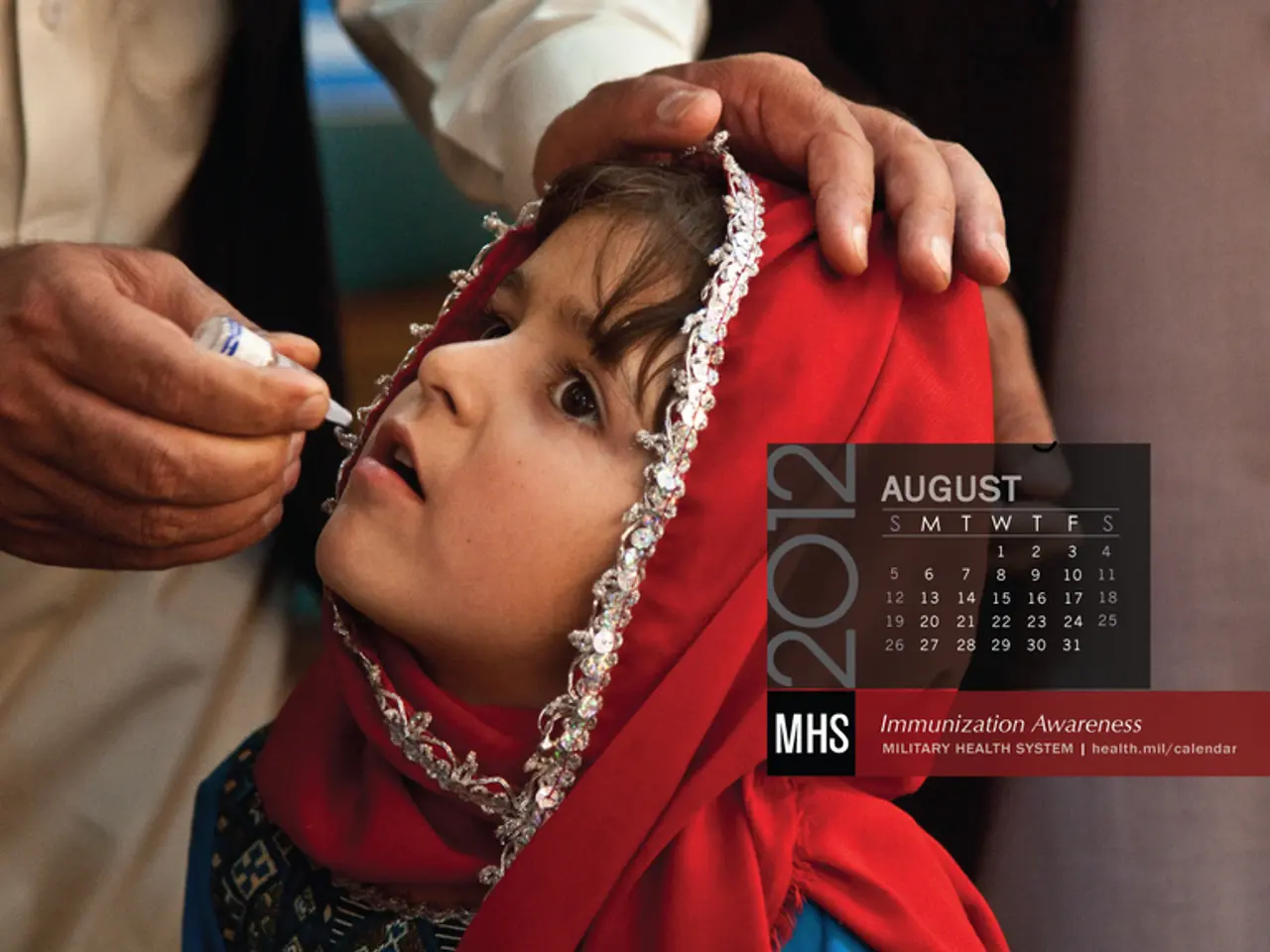HIV-AIDS and Kaposi Sarcoma: Link, Occurrence, and Risk Factors
In a significant development for people living with HIV, advancements in treatment have led to improved outcomes for Kaposi Sarcoma (KS), a type of cancer that primarily affects those with weakened immune systems.
According to the American Cancer Society, the overall 5-year survival rate of Kaposi sarcoma is approximately 50%. This figure, however, varies depending on the disease stage, treatment, and individual circumstances.
The human herpesvirus-8 (HHV-8) is associated with Kaposi sarcoma in people with weakened immune systems. Late-stage HIV can make a person more prone to Kaposi sarcoma due to a weakened immune system.
Fortunately, treatment options have evolved to combat this disease effectively. Antiretroviral Therapy (ART) remains foundational in treating KS in HIV-positive patients. ART restores immune function and reduces HIV viral load, which helps control KS progression.
Chemotherapy agents such as paclitaxel and pegylated liposomal doxorubicin are now recommended for KS treatment, especially in advanced cases. These regimens have shown efficacy in controlling disease and improving survival.
For localized KS lesions, laser modalities such as Nd:YAG laser (deep tissue penetration, useful for nodular lesions) and pulsed dye laser (effective for superficial lesions with excellent cosmetic results) are important dermatological options with minimal adverse effects.
The advent of ART has drastically improved the prognosis for HIV-associated KS. While exact 5-year survival rates for KS in HIV-positive individuals depend on treatment and disease extent, improvements in related HIV-associated cancers show survival improvements exceeding 80% in well-treated patients.
Management must consider potential treatment pitfalls and monitor immune status through CD4 testing, especially in advanced HIV, as compromised immunity worsens outcomes.
It is recommended that people with HIV contact a doctor if they develop any new symptoms, especially any growths that could be cancer, are not currently taking antiretroviral medications, or develop signs of an infection, such as a fever.
It is also crucial to get tested for HIV, especially after potential exposure. People not taking antiretroviral therapy can be immunocompromised, increasing their risk of developing Kaposi sarcoma.
In people with Kaposi sarcoma who do not develop another cancer, their outlook is generally favorable. However, the risk of developing Kaposi sarcoma is highest among people who are HHV-8-positive and also have HIV.
Data suggests that approximately 70% of people with HIV do not know they have the virus. This underscores the importance of regular testing and early diagnosis, as the outlook for people with Kaposi sarcoma is better when a doctor diagnoses it early.
The worldwide prevalence of Kaposi sarcoma is low, but it is much higher in sub-Saharan Africa, where it is the leading cause of cancer in men and the third-leading cause of cancer in women. This may be because HIV rates are higher in sub-Saharan Africa, and people have limited access to treatment.
In conclusion, the outlook for people with Kaposi sarcoma is improving, thanks to advancements in treatment and early diagnosis. It is essential for people with HIV to maintain regular medical check-ups, get tested for HIV, and adhere to antiretroviral therapy to reduce the risk of developing Kaposi sarcoma and improve their overall health.
[1] Centers for Disease Control and Prevention. (2021). HIV and Cancer. Retrieved from https://www.cdc.gov/cancer/hiv/index.htm [2] National Cancer Institute. (2021). Kaposi Sarcoma Treatment (PDQ®)–Patient Version. Retrieved from https://www.cancer.gov/types/ks/patient/ks-treatment-pdq [3] National Comprehensive Cancer Network. (2021). Kaposi Sarcoma (Non-Hodgkin's Lymphoma, Primary Cutaneous). Retrieved from https://www.nccn.org/professionals/physician_gls/pdf/ks.pdf [4] World Health Organization. (2020). Antiretroviral drugs for treating and preventing HIV infection. Retrieved from https://www.who.int/publications/i/item/9789240016089 [5] World Health Organization. (2020). Kaposi Sarcoma. Retrieved from https://www.who.int/news-room/fact-sheets/detail/kaposi-sarcoma
Read also:
- Consuming pineapple in the evening: Potential implications reviewed
- Magnesium has become a topic of widespread conversation lately.
- Large-scale Sports and Health Festival, named "Stormfest," draws in over ten thousand enthusiastic spectators
- Online healthcare service for Covid-19 patients made available through 3 applications, provided by the Health Ministry.




